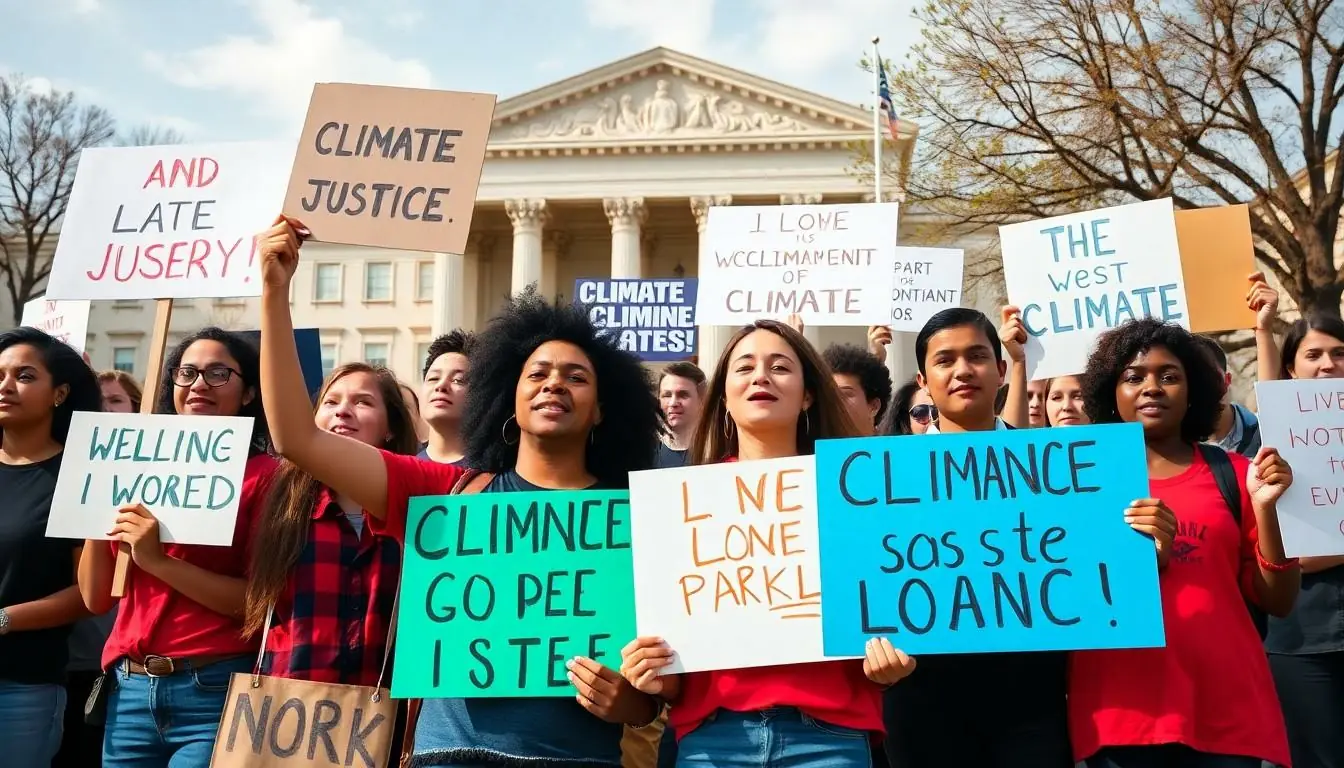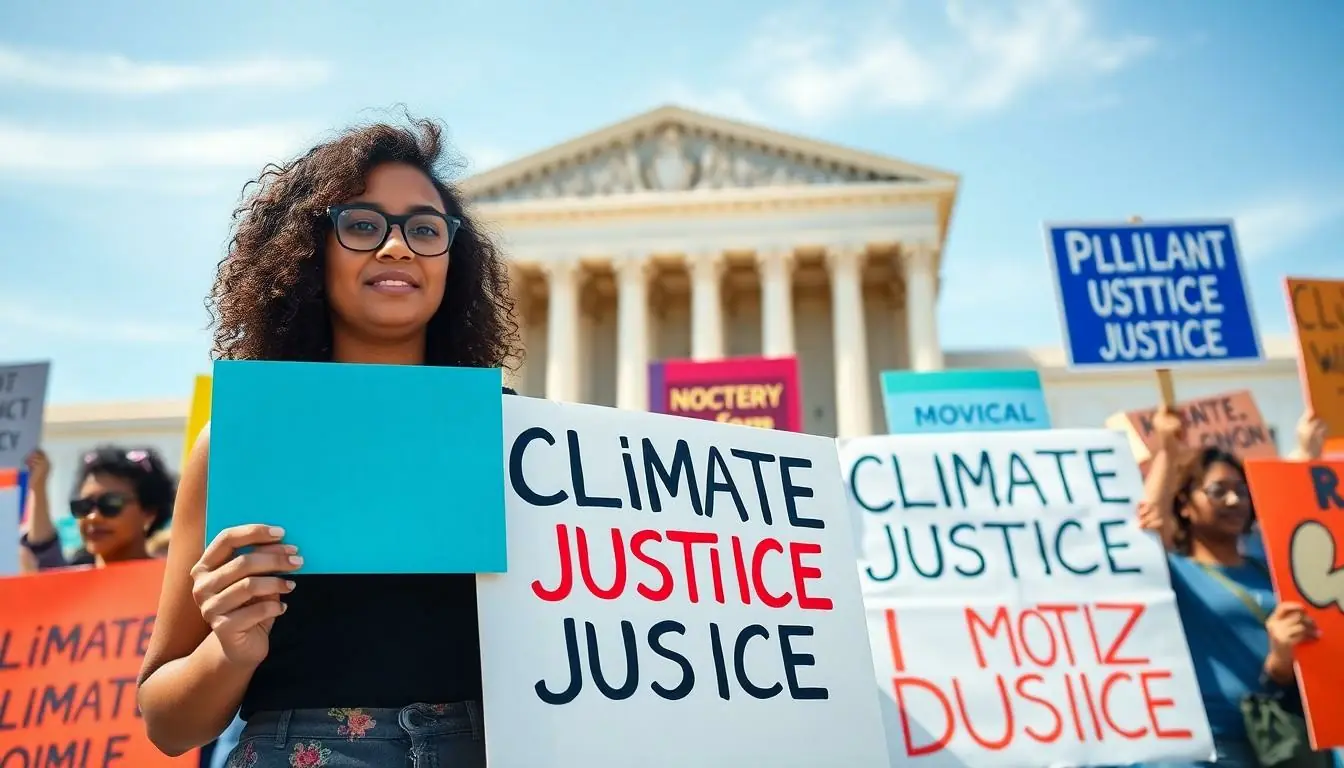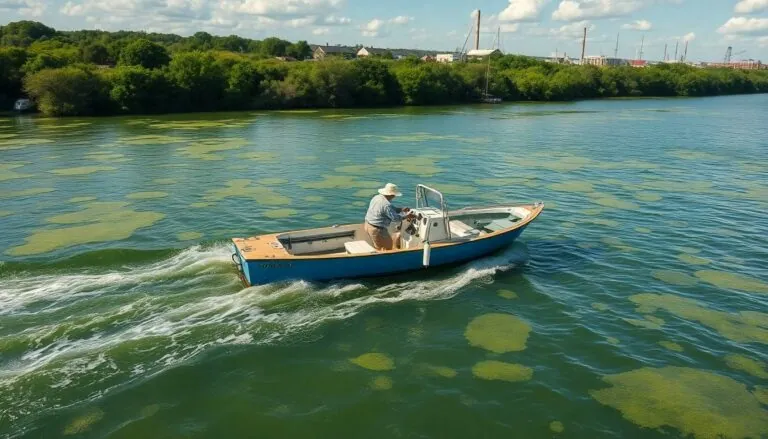In a world where the weather seems to have taken a cue from a dramatic soap opera, the Supreme Court is stepping into the spotlight to tackle climate change. With temperatures rising and polar bears getting their own reality shows, it’s clear that something needs to be done. But what role does the highest court in the land play in this environmental drama?
As legal minds grapple with climate policy, the stakes couldn’t be higher. Decisions made in these hallowed halls could shape the future of our planet—no pressure, right? From landmark cases to heated debates, the Supreme Court’s involvement in climate change is a wild ride that could either save the day or leave us all in a hot mess. Buckle up as we explore how the court’s rulings might just be the plot twist we need in the climate saga.
Table of Contents
ToggleOverview of Supreme Court Climate Change Cases
The Supreme Court has considered several significant cases related to climate change. Cases such as Massachusetts v. EPA (2007) established the authority of the Environmental Protection Agency (EPA) to regulate greenhouse gases under the Clean Air Act. This landmark ruling allowed states to challenge the federal government’s inaction on climate change, emphasizing the role of judicial review in environmental policy.
Next, the case of Juliana v. United States (2015) drew attention for its unique focus on the government’s duty to protect the atmosphere for future generations. While the court ultimately dismissed the case on procedural grounds, it sparked discussions on the constitutional rights related to a stable climate.
Additionally, West Virginia v. EPA (2022) highlighted the regulatory limits of the EPA. The court ruled that the EPA lacked the authority to mandate sweeping emissions reductions, signaling potential constraints on federal agencies’ powers. This decision raised concerns about the federal government’s ability to combat climate change effectively.
In 2022, Sackett v. EPA also impacted environmental protections. The ruling narrowed the scope of the Clean Water Act, potentially affecting wetland regulations vital for climate resilience. Such rulings can reshape how climate policies are implemented at federal and state levels.
These cases reflect the judicial branch’s critical role in shaping climate policy. The interpretations and implications of these decisions influence how climate action can be pursued, making the Supreme Court a pivotal player in environmental law.
Key Supreme Court Decisions

Significant Supreme Court decisions impact climate change policy and regulation. Several landmark cases illustrate the court’s influence.
Massachusetts v. EPA
Massachusetts v. EPA, decided in 2007, established the Environmental Protection Agency’s authority to regulate greenhouse gases. This ruling empowered states to hold the federal government accountable when it failed to act on climate change. The court found that the EPA must determine whether these gases endanger public health or welfare. The case marked a turning point in environmental law, providing states the legal standing to challenge federal inertia. This decision paved the way for further climate action through regulatory mechanisms and set a precedent for how agencies respond to environmental issues.
Juliana v. United States
Juliana v. United States emerged in 2015, focusing on the government’s obligation to protect the atmosphere for future generations. Plaintiffs, a group of young people, argued that climate change infringes on their constitutional rights. Claims centered on the government’s failure to mitigate climate risks. Despite its dismissal on procedural grounds, the case sparked national conversations about the legal dimensions of climate justice. Discussions surrounding this case continue to influence the public’s understanding of governmental accountability regarding future climate stability.
Implications for Environmental Policy
The Supreme Court’s decisions significantly shape environmental policy, influencing regulatory dynamics and legislative frameworks. Recent rulings set the tone for how climate-related issues are managed.
Regulatory Authority
The court’s decisions directly affect the Environmental Protection Agency’s (EPA) regulatory authority. For example, the Massachusetts v. EPA case clarified that the EPA could regulate greenhouse gases under the Clean Air Act. This ruling allowed states to challenge federal inaction on climate issues, empowering them to take more aggressive measures. Conversely, West Virginia v. EPA limited the scope of the EPA’s regulatory powers, raising questions about federal capability to address climate change effectively. Challenges in regulatory authority from additional cases could hinder comprehensive actions needed to combat environmental crises.
Impact on Future Legislation
Rulings from the Supreme Court may inspire or deter future legislation related to climate change. Following landmark cases, legislators might push for new laws addressing emissions controls or environmental protections. States can use the precedents set in these cases to craft innovative policies tailored to local conditions. As public awareness around climate justice grows, legislative responses will likely reflect this urgency. The interaction between judicial decisions and legislative actions shapes the landscape of environmental policy and climate action in the coming years.
Public Reactions and Opinions
Public reactions to the Supreme Court’s climate change rulings range from widespread support to significant opposition, reflecting a diverse landscape of views on environmental regulations.
Supporters of Action
Supporters advocate for robust action against climate change, emphasizing the importance of the Supreme Court’s role in empowering states. They argue that decisions like Massachusetts v. EPA bolster state authority, enabling proactive measures against greenhouse gas emissions. Activist groups often express optimism regarding these rulings, viewing them as crucial steps toward climate justice. Public demonstrations and campaigns highlight the urgency for comprehensive climate policies. Many organizations promote legislative initiatives driven by the court’s decisions, aiming for stronger federal environmental protections. Increased public awareness around climate-related issues fuels calls for responsible governance and accountability from legislators. Overall, advocates believe that proactive legal frameworks significantly contribute to combating climate challenges.
Opponents of Regulation
Opponents of regulation frequently raise concerns about overreach, criticizing the Supreme Court’s influence on environmental policies. They argue that decisions like West Virginia v. EPA undermine federal authority, potentially stalling effective climate action. Business groups often express worries regarding the economic impact of stringent regulations, claiming that such measures could hinder growth and job creation. Skeptics question the necessity of stringent climate policies, advocating instead for market-driven solutions. Some voices in the political sphere argue that excessive intervention disrupts longstanding legal frameworks, leading to unintended consequences. Heightened debates around these topics reveal the complexity of balancing economic interests with environmental responsibilities. These differing perspectives shape the ongoing conversation surrounding the Supreme Court’s involvement in climate change.
The Supreme Court’s role in shaping climate change policy is pivotal. Its decisions not only influence regulatory frameworks but also reflect the broader societal debates on environmental responsibility and justice. As the court navigates complex cases, the implications of its rulings will resonate across legislative landscapes and public discourse.
The ongoing dialogue around these decisions highlights the urgent need for a balanced approach that considers both environmental protection and economic interests. As the climate crisis intensifies, the Supreme Court’s influence will continue to be felt, making it essential for stakeholders to engage actively in this crucial conversation. The future of climate action may very well hinge on how these judicial decisions unfold in the years to come.





